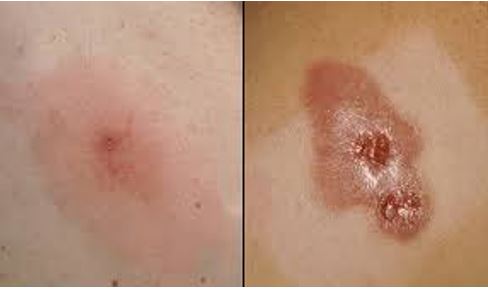During complex medical procedures like surgeries, a variety of techniques and equipment are essential for success. While some equipment directly aids in the treatment during surgery, others play a crucial role in preventing complications. Bair Hugger warming blankets are a prime example, helping to prevent hypothermia (a drop in body temperature) during surgery. Today, we’ll delve deeper into Bair Hugger warming blankets, exploring their purpose, benefits, and potential risks associated with their use.
Why is it important to prevent hypothermia during surgeries?
Orthopedic surgical procedures consist of three phases including:
– Preoperative phase
– Intraoperative phase
– Postoperative phase
It is highly significant to keep the patient’s body temperature normal in all of the above phases to ensure maintaining normothermia (normal core body temperature) and prevent hypothermia. The Bair hugger was invented in 1987 by Dr. Scott D. Augustine to keep patients warm during surgery.
During surgeries, almost all patients suffer from hypothermia which is the medical term that describes the process of the body losing its heat faster than its production in the body.
Hypothermia can be drastic during surgeries as it can cause blood loss, infections, and prolonged hospital stay time. To avoid these complications that could arise due to the patient suffering from hypothermia during surgery, several methods and devices are used by surgeons to keep patients warm during surgery. These devices include blood warmers, fluid warmers, and, warming blankets.
What is a Bair hugger warming blanket?

A Bair hugger warming blanket is a blanket used during surgeries to keep the patients warm. It works with the help of a flexible hose underneath the blanket that pushes warm air into the blanket.
Most commonly, a warming blanket is used along with intravenous fluid warming systems to maintain the patient’s core body temperature. When used properly, it can prove beneficial for surgical patients and can assist in the prevention of hypothermia during surgeries.
However, one major problem that can arise due to the use of Bair hugger warming blankets is the increased risk of infection. As Bair hugger warming blankets are forced air surgical warming blankets, the recirculation of the air can cause the surgical site to be infected due to germs and bacteria.
Infections linked with Bair hugger warming blankets
It has been reported that the use of Bair hugger warming blankets has been linked to various infections that can be hard to treat and can involve further surgical procedures and antibiotic therapies. Furthermore, in extreme cases treatment may require joint fusion or removal, amputation, or, two-stage revision surgery.
All of these problems can cause additional and unnecessary suffering, treatment finance, and prolonged hospital stay time that can be a cause of problems for the patient as well as the hospital staff. The following infections can be caused by the use of a Bair hugger warming blanket.
– Deep joint infection

Deep joint infection
The use of Bair hugger warming blankets has been linked to deep joint infections. These joint infections cause the tissues of the affected joint to die. Mostly, knee and hip joints are affected due to this infection. The symptoms that a patient is suffering from a deep joint infection include the following:
– Chills
– Fever
– Night sweats
– Fatigue/ extreme tiredness
– Drainage at the incision site
– Pain or stiffness in the implant area
– Swelling around the implant site
Most of the time, surgery is required to treat deep joint infections. However, if the infection is diagnosed in its early phases, it can be treated with the help of debridement, which is the surgical procedure of washing out the infected joint.
During debridement, all the contaminated soft tissues are removed and the implant is thoroughly cleaned. Also, any plastic liners or spacers that were used will be replaced. If the infection is not diagnosed in the initial stages, the treatment will require one or more surgeries to repair the damage.
– Septic infections
The use of warming blankets has been linked to septic infections which are infections caused by the inflammation of joints due to bacterial or fungal infection. In this condition, the bacteria enter the joint directly when a penetrating injury occurs above or near a joint.
Mostly, this infection starts from the joint that was operated on and then it spreads to other joints of the arms and legs. Typically, it can affect a person’s ankle, hip, knee, shoulder, elbow, and, wrist joints. It can also affect the pelvis, heels, and, spine.
Septic infection is an infection that can cause extreme damage to a person’s bones and cartilage within a joint. If left untreated, it can cause permanent joint damage. In severe cases, a septic infection can cause amputations, permanent and total disability, multiple surgeries, and, even death.
– Methicillin-resistant Staphylococcus aureus (MRSA)

MRSA infection
MRSA is a serious staph infection and mostly happens to patients who spend time in hospitals, nursing homes, and, dialysis centers. When a patient suffers from MRSA after using a warming blanket, it is called healthcare-associated MRSA or HA-MRSA.
MRSA commonly affects a person’s bones, joints, heart, lungs, and, bloodstream. The thing that makes MRSA difficult to cure is that the germs become resistant to many strong antibiotics. Most people get infected with MRSA after coming in contact with antibiotic-resistant bacteria during the hospital stay.
Conclusion
Bair hugger warming blankets are used in several surgeries throughout the world. The purpose of using these warming blankets is to keep the patients warm during preoperative, intraoperative, and, postoperative phases of orthopedic surgeries and prevent hypothermia.
However, it has been reported that the use of Bair hugger warming blankets has been associated with many serious infections that can cause severe complications and even death of the patient. This happens due to the forced air warming system of these blankets in which the air is recirculated and the germs and bacteria can cause the surgical site to be infected.
This can lead to deep joint infections, septic infections, or MRSA. It’s for these reasons that finding and improving methods to prevent hypothermia during surgeries, while also minimizing the risk of infection, is highly significant. Bair hugger warming blankets are a technology designed to address this very need. However, as with any medical intervention, it’s important to understand the potential risks associated with their use.

PhD Scholar (Pharmaceutics), MPhil (Pharmaceutics), Pharm D, B. Sc.
Uzma Zafar is a dedicated and highly motivated pharmaceutical professional currently pursuing her PhD in Pharmaceutics at the Punjab University College of Pharmacy, University of the Punjab. With a comprehensive academic and research background, Uzma has consistently excelled in her studies, securing first division throughout her educational journey.
Uzma’s passion for the pharmaceutical field is evident from her active engagement during her Doctor of Pharmacy (Pharm.D) program, where she not only mastered industrial techniques and clinical case studies but also delved into marketing strategies and management skills.
Throughout her career, Uzma has actively contributed to the pharmaceutical sciences, with specific research on suspension formulation and Hepatitis C risk factors and side effects. Additionally, Uzma has lent her expertise to review and fact-check articles for the Health Supply 770 blog, ensuring the accuracy and reliability of the information presented.
As she continues her PhD, expected to complete in 2025, Uzma is eager to contribute further to the field by combining her deep knowledge of pharmaceutics with real-world applications to meet global professional standards and challenges.








